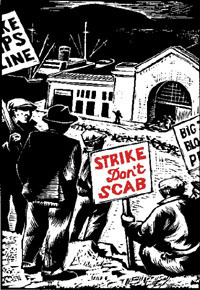|
|
|
|
|
|
Airline Workers Fed Up Over Pay Declines While Profits Rocket
Airline Workers Fed Up Over Pay Declines While Profits Rocket
http://www.wsj.com/articles/airlines-rising-labor-costs-in-focus-ahead-o...
Airlines’ Rising Labor Costs in Focus Ahead of Earnings
As fuel prices have plunged, employee pay and benefits have returned as airlines’ biggest expense item
Delta Air Lines kicks off the airline reporting season Tuesday, with others announcing results over the next few weeks. A Delta jet takes off from Seattle-Tacoma International Airport. PHOTO: ELAINE THOMPSON/ASSOCIATED PRESS
By SUSAN CAREY
Jan. 16, 2016 5:30 a.m. ET
6 COMMENTS
U.S. airlines are expected to report strong fourth-quarter financial results and record annual profits. But investors may fret over a byproduct of that success: rising labor costs.
As fuel prices have plunged, employee pay and benefits have returned as airlines’ biggest expense item. Because the industry—which not too long ago was mired in red ink—appears to be minting money now, its pilots, flight attendants, mechanics and other workers are demanding to be rewarded for aiding in its turnaround. They also want to recoup concessions they made when companies went through bankruptcy-court protection.
Delta Air Lines Inc. kicks off the airline reporting season Tuesday, with others announcing results over the next few weeks. Deutsche Bank estimates that aggregate pretax profit for the U.S. carriers in the fourth quarter soared 44% from a year earlier to $5.2 billion, thanks largely to oil’s fall to a 12-year low, which has slashed fuel tabs.
Deutsche Bank also estimates, though, that industry wage costs rose 11%, or $909 million, in the latest period, after a year-over-year increase of $964 million in the third quarter. “We are expecting this cost line to experience above- average growth over the next several years as union contracts are renegotiated,” Deutsche Bank said.
Credit Suisse expects 2016 to be the seventh consecutive year of industry profitability, marking the longest positive cycle in U.S. airline history. But, in a research note, it also observed that in the last extended up-cycle in the late 1990s, “generous labor contracts led to rising wage expenses that weighed heavily on industry profitability after the cycle turned in 2001.”
Advertisement
In the ensuing decade, nearly every big U.S. carrier filed for bankruptcy, which facilitated big cuts in labor costs. Now those savings are waning as carriers agree to richer contracts to mollify unions and, at merged airlines, to engender team spirit.
Credit Suisse estimates that 18 contracts are open for renewal at U.S. carriers, covering an array of work groups. Unions know this is the best opportunity in years to win back lost wages and benefits and move their members up the pay scale. They have been pushing for contracts that improve on those of similar groups at rival carriers.
The union coalition that represents 30,000 mechanics and ramp workers at American Airlines Group Inc., the largest carrier by traffic, made its stance clear last month at the start of talks on a joint contract: “It was these workers who sacrificed when times were bad and made it possible for American to not only survive but now thrive. It’s high time they receive their just rewards…Nothing less will suffice.”
American has said it wants its employees to have industry-leading contracts. This would be the last big group to get a post-merger joint contract, giving the carrier cost certainty for the next several years, a spokesman said.
Some unionized groups—including pilots and flight attendants at Southwest Airlines Co.—overwhelmingly rejected significant proposed raises last year in the haopes of doing better. Southwest ground workers begin voting this month on a pact that would raise pay by 20% over five years. While that sounds like a healthy increase, union leaders haven’t recommended the deal.
U.S. carriers, which are contending with heightened domestic-fare competition and the effects of the strong dollar on international routes, are trying to temper worker expectations. They also are trying to revamp contractual work rules to boost productivity, find savings in employee benefits and, in some cases, reduce profit-sharing payouts or ban such variable pay altogether.
American hasn’t allowed profit-sharing in new contracts since its late 2013 merger with US Airways. Instead, it has agreed to significant raises, arguing that employees want defined pay increases and certainty in their paychecks. Its 15,000 pilots early last year received immediate raises of 23%, and American at the time said the new pact would increase its costs by $650 million in 2015. Flight attendants got immediate 14% increases.
American’s expenses for wages and benefits in the first nine months of 2015 rose 11% from the prior-year period to $7.1 billion. Fuel, formerly its biggest cost, fell about 40% to $5.8 billion.
Delta, the second biggest carrier, has only one major union, its pilots. They rejected a three-year deal last summer that would have raised pay by more than 20%. Among the aspects of the proposal they didn’t like, many pilots said later, was Delta’s proposal to limit a profit-sharing plan that had become highly lucrative due to their employer’s strong results. The plan contributed to a 16.6% boost in pilots’ compensation in 2014 and likely surpassed that in 2015.
Most of Delta’s nonunion ground workers and flight attendants received 18% in pay increases last year. But Delta unilaterally trimmed the formula for profit-sharing payments to those groups, effective in 2017. The carrier said at the time that it was responding to employee feedback by putting more money in base pay, increasing compensation security and predictability.
—The Week Ahead looks at coming corporate events.
Write to Susan Carey at susan.carey@wsj.com
-

- Log in to post comments
- Printer-friendly version



